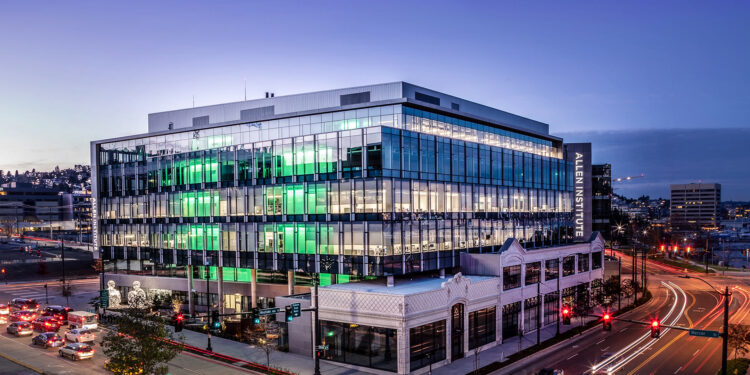Seattle’s Allen Institute is contributing to a pioneering space mission that could reshape the future of medicine. This weekend, stem cells supplied by the Allen Institute for Cell Science are set to launch aboard a SpaceX Falcon 9 rocket, marking the first attempt to grow heart and brain organoids in space.
The effort is being led by Cedars-Sinai researchers in Los Angeles, who believe that studying organoids, tiny, three-dimensional clusters of cells that replicate the behavior of real organs, beyond Earth’s gravity could unlock new insights into conditions such as ALS, Parkinson’s, and cardiovascular disease. On Earth, gravity constrains how these clusters develop. Scientists hope the microgravity of space will allow organoids to form more complex structures, possibly even blood vessels, offering a clearer model for disease and potential treatments.
The Allen Institute provided the frozen stem cells that will make the journey. Once aboard the International Space Station, astronauts will place the samples inside a specialized “plate habitat” designed by BioServe Space Technologies in Colorado. The organoids will remain in orbit for about a month before returning to Cedars-Sinai for further study.
Founded by the late Microsoft co-founder Paul Allen, the Allen Institute is a nonprofit dedicated to advancing human health through large-scale biological research and open-access data. Its role in this mission underscores Seattle’s growing influence in space-based biomedical science.
The experiment is part of NASA’s 33rd resupply mission with SpaceX and represents Cedars-Sinai’s sixth venture into space. Previous missions have introduced DNA into stem cells and even produced stem cells in orbit. This launch is scheduled for 11:45 p.m. Pacific Time on August 23 from the Kennedy Space Center in Florida, with live coverage available through NASA and SpaceX channels.
For Cedars-Sinai scientist Arun Sharma, the research is part of a much bigger vision. He said his dream is to one day see laboratories in space operating in parallel with those on Earth, a step that could eventually lead to bioprinting tissues or even entire organs in orbit.







